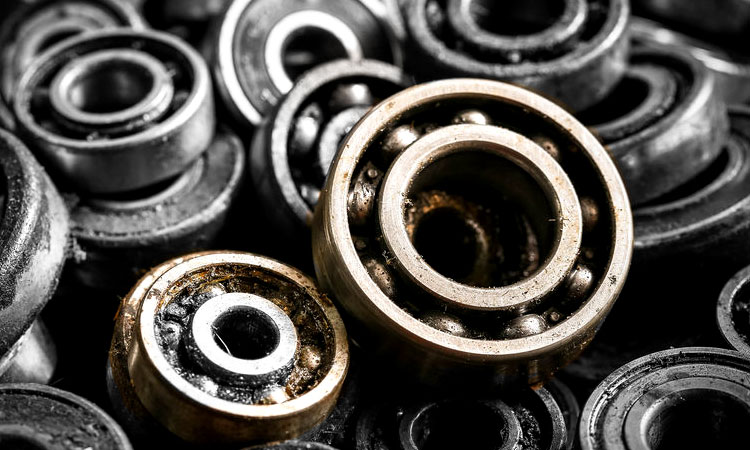Not every bearing will live up to its expected life span. In this article we will have a look at some common causes of premature bearing failure. All bearings must be replaced at some point, but by considering the following points you will get the most out of them.
Poor lubrication
A common cause of premature failure is incorrect lubrication. Proper lubrication will reduce friction between parts. This reduces energy consumption, heat generation, wear & tear and noise levels. In addition, the lubricant provides protection against corrosion and dirt. Proper lubrication is therefore of utmost importance. Things to look out for are:

Wrong type of lubrication:
There are a great many types of lubricants, of which greases and oils are the most common. However, not all products are the same! They can differ in terms of consistency, viscosity of the (base) oil, water resistance, shelf life, etc. Also, some applications may require special properties. These include lubricants for use in the food- and pharmaceutical industries, or applications involving chemical vapours or extreme temperatures. Be sure to match the choice of lubricant to its application.
Not enough lubrication:
Too little lubricant may result in steel-steel contact between rolling body and raceway. This will increase heat generation and will accelerate wear.
Too much lubrication:
Using too much lubricant may also result in an increase of temperature due to the increased friction of the lubricant itself. The seals can also be damaged. Again, this may lead to premature bearing failure.
When changing lubricants, always remember to remove the old, contaminated grease first.
Incorrect (dis-)assembly method
Bearings that are not installed correctly, may be damaged in the process. Do not force a bearing into place with a hammer. Always use the proper method, whether it be mechanical, hydraulic, or even using heat to install a bearing, and always use the appropriate tools. Removing a worn bearing should be done with care so that the replacement bearing can be installed without any problems. Tools for safe installation and removal such as bearing pullers, hook wrench sets and transport kits are available.

The alignment of the shafts on which the bearings are mounted is also important. In fact, misalignment may accelerate bearing failure.
Wrong choice of bearing
No matter how skilfully a bearing is installed, there will be premature failure if the bearing type is not suitable for the application. The type of load plays an important role (radial, axial, or combined) and capacity and dimensions must also be correct.
In addition, there may be specific or extreme operating conditions. A bearing may be exposed to severe shocks and vibrations or even electrical charges. In these cases, you should always choose bearings that are designed for these purposes (often recognisable by a specific suffix).
Dirt
Small dirt particles such as grit and dust that get into the bearing or lubricant will cause excessive wear. Causes that may introduce dirt can be:
Wrong type of seal:
If the seal is not able to withstand certain conditions, such as high speed, temperature, or loads, it may fail and no longer prevent dirt entering the bearing.
Incorrect positioning of seal:
If a seal is not installed correctly, the bearing may not be sealed properly, and dirt particles may enter the system.
Worn or damaged seal:
The performance of a seal can be reduced over time due to wear or damages. A worn or broken seal offers no protection against contaminations.
Incorrect storage or usage:
Bearings must be stored in a clean, cool area where they are not exposed to moisture and dust or other dirt. Do not remove the packaging and protective film until right before assembly. Caution is also required during transportation and moving of bearings. Impacts and falls can cause damage that is not always visible, which may increase the chances of contamination.
Overloading and under-loading

Overloading:
Metal fatigue may occur prematurely if a bearing is continuously being overloaded. Metal fatigue is the result of continuously varying loads on the bearing’s raceway surface. The strength of the material decreases until small cracks appear, and parts fall apart. As a bearing approaches the end of its expected service life, fatigue often occurs regardless of the experienced load. Try to avoid overloading and prevent fatigue from happening too soon.
Under-loading:
A bearing needs a minimum load for proper performance, especially when high speeds and large gears are involved. If the load is too low, the balls or rollers will not roll, but drag across the raceway. These sliding movements add friction that causes damage to the material.
By keeping these tips in mind, your bearings will last longer.



